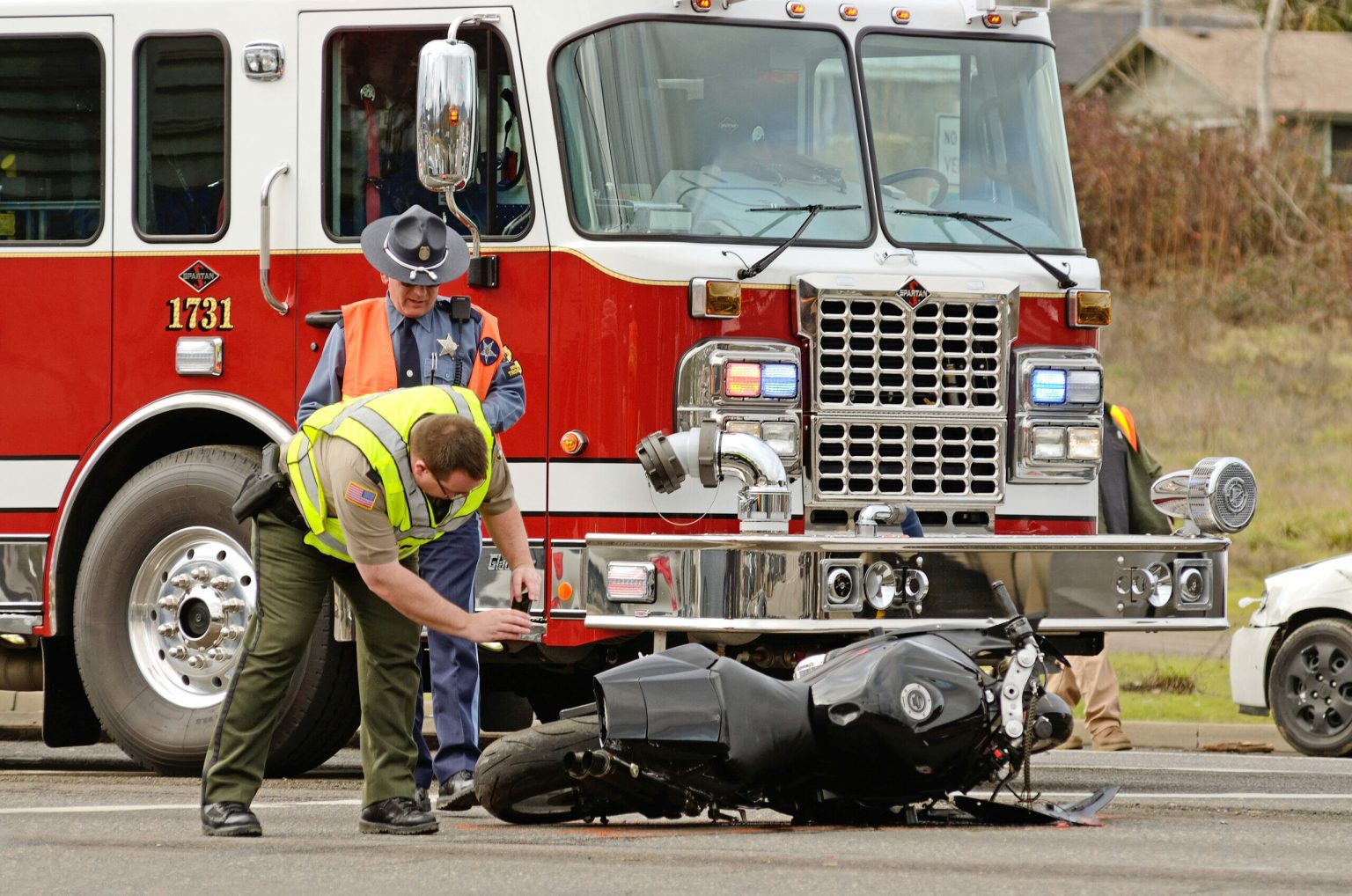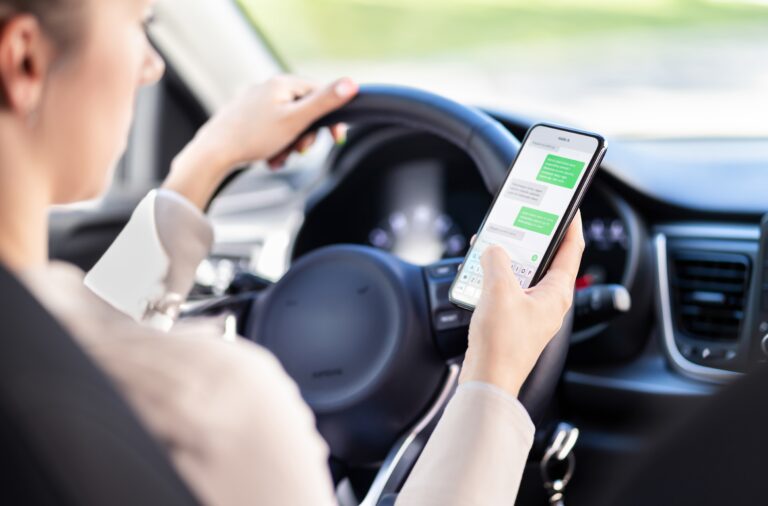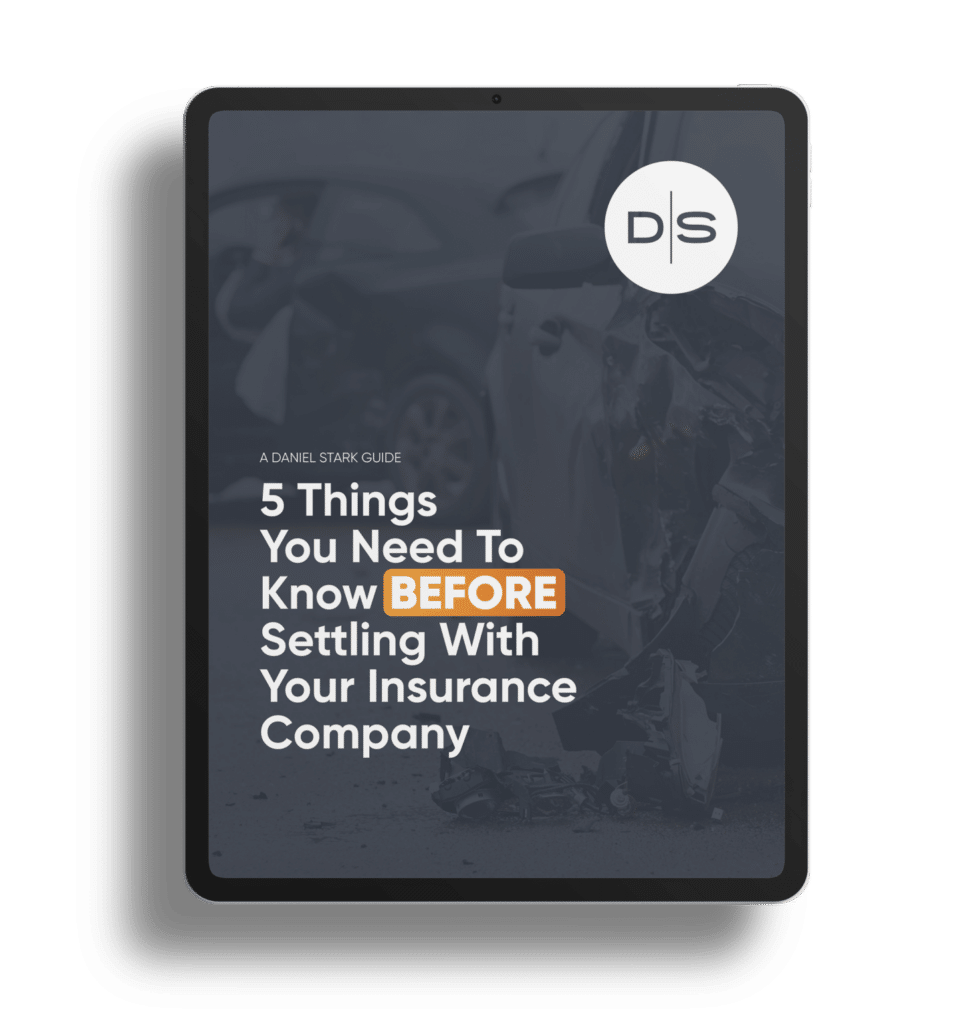Even the most cautious motorcyclists can find themselves in a crash that was no fault of their own.
If you are involved in a motorcycle wreck, it is important to know what steps to take. Your actions after a crash could potentially save your life.
To help you prepare, here are some simple steps to follow after a motorcycle crash.
What should you do if you’re involved in a motorcycle crash?
Step One: Get to Safety
When involved in a motorcycle collision, your safety should be the top priority. If you can safely move the bike out of oncoming traffic, do so. But if you suspect that you’re injured, then leave the bike behind.
Leaving your motorcycle behind is often the safest decision. Remaining at the crash site may put you at risk of being hit by other distracted drivers. Moving your motorcycle could also worsen any injuries you sustained, and it may compromise important evidence for insurance or legal proceedings.
It’s important to remain calm, take deep breaths, and distance yourself from any potential hazards, such as leaking gas, fire, or damaged vehicles.
Step Two: Assessing Your Injuries
After experiencing a crash, ensure that you are not injured before taking any further action. If you have sustained injuries, seek medical attention immediately. Avoid removing any protective gear as it may worsen any existing injuries.
Try to limit movement and rest in a neutral position until emergency services arrive. Having a first aid kit on hand can be helpful in cases of minor crashes and falls.
You may experience physical and emotional shock. Do your best to remain calm and assess the situation. Take note of any symptoms, and remember as much information as possible to provide accurate information to medical personnel. Remember that adrenaline can temporarily numb pain, so it’s important to check yourself for injuries, including bruising, swelling, and bleeding.
Don’t hesitate to call 911 and seek medical attention — even if you believe that you aren’t injured.
Step Three: Call for Help
Call law enforcement and emergency services immediately after reaching a safe location. Depending on the severity of the collision, paramedics may come to the scene.
If you need someone to call emergency services for you, signal them out by pointing if possible and clearly telling them what to do. Carrying emergency contact information cards with you can also be helpful in case you’re unable to provide information to emergency services. Request an ambulance if you’ve been injured and provide as much detail as you can about the driver and vehicle involved.
It’s important to ask for your police report number before leaving the crash site. Securing a copy of the police report is vital because it can provide valuable evidence for any future legal claims.
Step Four: Document the Crash
If possible, take videos and photos of the scene, including pictures of your bike, the other vehicles, and roadway features. This includes signs, skid marks, and obstructions that could have played a role in the crash.
Gathering as much evidence as possible is vital for both insurance and legal purposes. That being said, do not endanger yourself or others to gather evidence of property damage. As an alternative, consider writing down a detailed description of the events while they are still fresh in your memory.
Step Five: Collecting Witness Information
Collect the contact details, insurance information, and license plate numbers of everyone involved in the collision. This information will be necessary for you and your lawyer to communicate with the relevant parties and their insurance companies.
Try to obtain witness information as well, including their names, phone numbers, and a written account of what they saw. If you end up in a legal dispute, witness statements can be useful in supporting your case. However, never pressure witnesses to provide testimony if they are uncomfortable doing so.
Step Six: Seek Medical Attention
Even if you feel fine, delaying your visit to a hospital could hinder your recovery from injuries that you may not even be aware of immediately after a wreck.
Remember that serious injuries may not be immediately apparent and can take days, weeks, or even months to manifest. Motorcycle crashes can lead to severe internal bleeding and broken bones, making it essential to seek emergency help without delay.
Adrenaline can temporarily mask pain, which means that you may not be aware of the extent of your injuries.
If someone is badly injured, call for an ambulance immediately and keep them still, calm, and comfortable until help arrives. If you are hurt, inform the medical professionals that you were involved in a motorcycle crash and be open about your symptoms.
Step Seven: Contact Insurance and Legal Professionals
Contact your insurance company as soon as possible and provide all relevant information, such as the names of parties involved and witness contact info. Avoid admitting fault to anyone, including law enforcement and insurance representatives, to prevent being blamed for something that wasn’t your fault.
Seeking legal counsel may be necessary if you feel you have a viable personal injury case or if your insurance claim was denied. A lawyer specializing in motorcycle crashes can provide valuable assistance in situations where you were wrongly accused of being at fault, your damages exceed insurance coverage, or you incurred severe physical injuries and associated costs.
Always speak with your insurance in a timely manner and consult with a lawyer before accepting any settlement. Taking these steps after a motorcycle collision can make all the difference in protecting your legal rights as a rider.
Please note, this blog is meant as a general guide to follow after a motorcycle crash and does not constitute actual legal advice.










